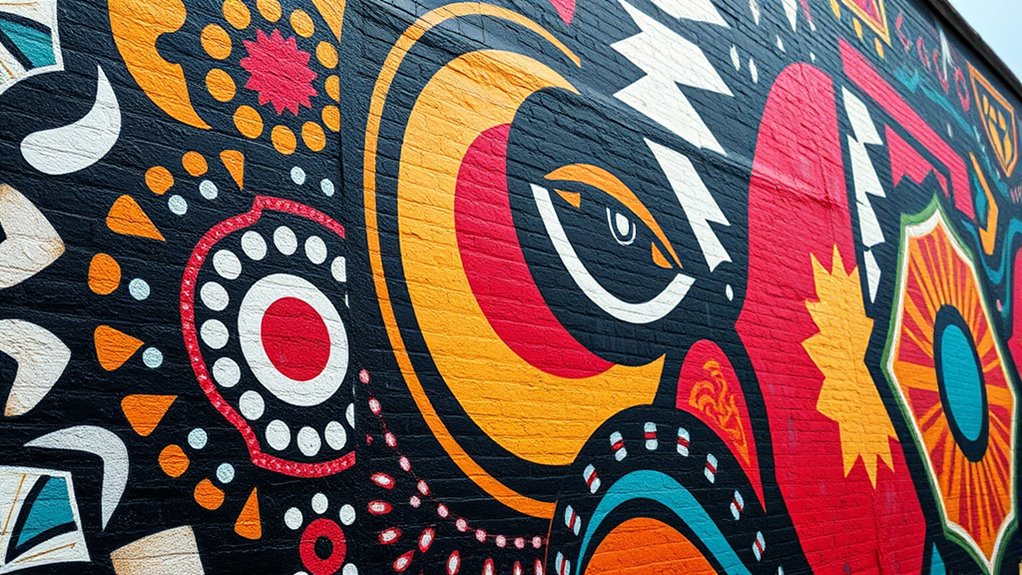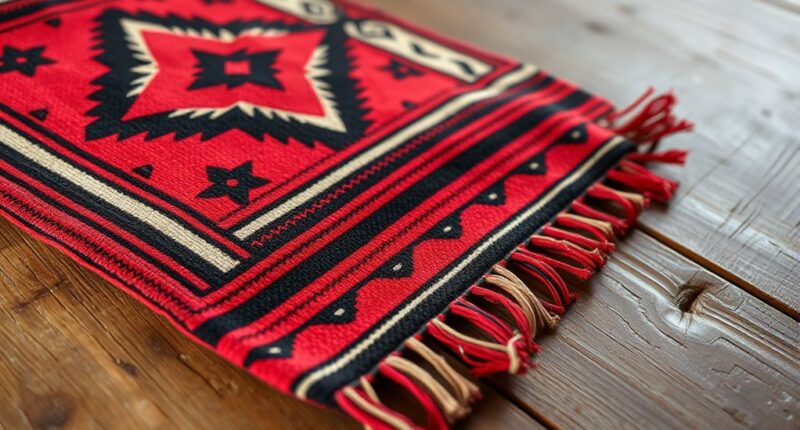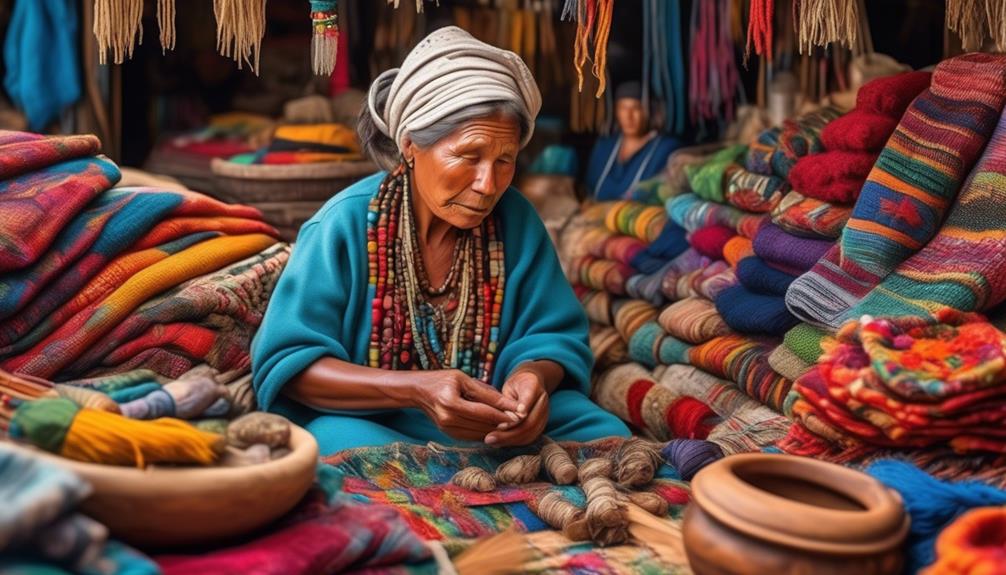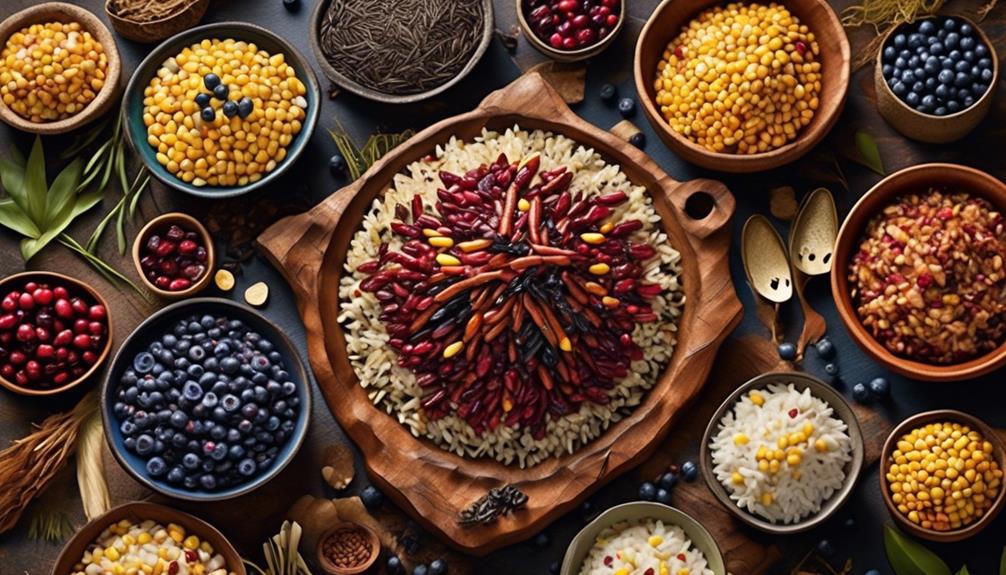To spot fake indigenous art and support authentic creators, look for pieces that show a clear understanding of cultural symbols, symbols that are used respectfully, and artists who are part of or collaborate with their communities. Be cautious of artwork that superficializes traditions or lacks context. Always research the origin and stories behind the pieces, and choose to support those who demonstrate genuine respect and knowledge. If you want to uncover more ways to distinguish and champion authentic indigenous art, keep exploring.
Key Takeaways
- Recognize symbols or motifs that lack cultural context or are used without understanding their significance.
- Support artists from the indigenous communities directly through galleries, exhibitions, or authentic online platforms.
- Be cautious of art that superficially mimics traditional styles without respecting their cultural origins.
- Educate yourself on the cultural meanings behind indigenous symbols to distinguish genuine work from misappropriation.
- Question the intent behind the artwork—whether it aims to honor or exploit cultural traditions.

Have you ever wondered what it truly means to practice brandalism? It’s more than just spray-painting murals or placing posters in public spaces; it’s about understanding the deeper messages behind the art you see. When you encounter street art or any form of public expression, it’s essential to contemplate whether what you’re looking at respects cultural boundaries. Many pieces that claim to celebrate indigenous traditions or heritage can actually be examples of cultural appropriation. This occurs when artists or corporations borrow symbols, motifs, or practices from marginalized communities without understanding or respecting their significance. Recognizing cultural appropriation helps you differentiate between authentic representation and superficial or exploitative use of cultural elements. Authenticity in art isn’t just about style or technique; it’s rooted in respect, context, and genuine connection. When you see art that appears to be from an indigenous community, ask yourself if the creator has a clear understanding of the cultural significance behind the symbols used. Is the artist genuinely connected to the community, or are they simply using cultural motifs as trendy or exotic visuals? Supporting art authenticity means backing creators who have a real stake in their work and who honor the traditions they draw from.
Understanding cultural boundaries and the significance behind symbols can also help prevent the spread of cultural misappropriation. In your role as an observer or advocate, you have the power to promote genuine indigenous art by seeking out and supporting artists who are part of or collaborate closely with their communities. This can include attending exhibitions, purchasing work directly from the artists, or sharing their stories and cultural context. Doing so not only helps preserve the integrity of indigenous traditions but also counters the spread of cultural misappropriation. It’s important to be mindful of the narratives surrounding the art you support. When you spot what might be a fake or appropriated piece, question its origins and the intent behind it. Is it intended to uplift or exploit? Does it respect the cultural lineage it claims to represent? These questions can guide you toward supporting authentic creators rather than inadvertently endorsing cultural misrepresentation.
Frequently Asked Questions
How Can I Verify if Indigenous Art Is Authentic?
To verify if indigenous art is authentic, you should consider its cultural significance and the artist credentials. Look for provenance or documentation that links the piece to a specific community or artist. Research the artist’s background and reputation to ascertain they’re recognized and respected within their culture. Authentic pieces often reflect traditional techniques and symbols, so understanding these aspects helps you distinguish genuine indigenous art from fakes.
What Are Common Signs of Fake Indigenous Artwork?
When identifying fake indigenous artwork, look for inconsistent cultural symbolism or a lack of connection to traditional motifs. Fake pieces often have art style authenticity issues, with unfamiliar techniques or exaggerated features that don’t align with authentic cultural practices. You might notice poorly crafted details or generic designs that seem mass-produced. Trust genuine artisans, and always research the specific cultural symbols to verify the artwork truly reflects its indigenous origins.
How Does Supporting Authentic Indigenous Creators Benefit Communities?
Supporting authentic indigenous creators helps communities thrive, with studies showing that such support boosts local economies by up to 30%. When you buy genuine indigenous art, you contribute to cultural preservation, ensuring traditions and stories are passed down. It also promotes economic empowerment, enabling creators to sustain their livelihoods and invest in their communities. Your support directly helps maintain cultural diversity and strengthens indigenous voices worldwide.
Are There Specific Certifications for Genuine Indigenous Art?
You might wonder if there are specific certifications for genuine indigenous art. While authenticity labels and indigenous certification programs exist, they vary widely by region and culture. These certifications help you identify authentic pieces and support real creators. Always look for recognized indigenous certification, which confirms the piece’s origin and craftsmanship. Trusting these labels guarantees you’re respecting indigenous communities and valuing their cultural heritage.
How Can I Report Counterfeit Indigenous Artwork?
You notice a piece that seems suspiciously like a fake indigenous artwork. To report it, you should contact local authorities or cultural organizations that handle intellectual property and cultural preservation. Your action helps defend the cultural significance and legal protections indigenous artists have. By reporting counterfeit art, you support authentic creators and ensure their work remains respected and properly valued within their communities.
Conclusion
Now that you know how to spot fake indigenous art, you hold a torch that lights the path to authentic creativity. Every genuine piece is a heartbeat of culture, a story etched in time. By supporting true creators, you become a guardian of tradition, shielding it from the shadows of imitation. Let your awareness be the compass guiding respect and appreciation—turning your eyes into lenses that see through deception and celebrate true artistry.









